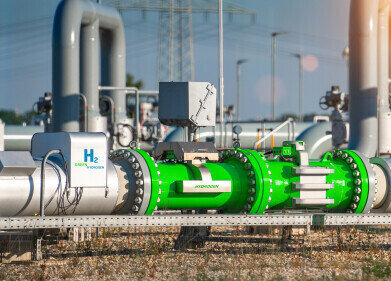Sustainable aviation fuel (SAF)
How is Fuel Tested in Storage Tanks?
Feb 02 2022
While storage tanks are often filled with finished petroleum products, the testing process doesn’t stop here. Even after fuel has been deposited into a storage tank, testing plays a fundamental role in monitoring quality and staying compliant.
Read on to find out more about how fuel is tested in storage tanks and why the process is so important.
Why is fuel tested in storage tanks?
The main reason testing is carried out on fuel stored in tanks is to monitor quality. When stored for long periods of time, fuel can start to degrade and take on contaminants. Petroleum products are subject to oxidation, polymerisation and emulsification. Fuel is also at risk of infestation from fungus and bacteria that can thrive over time.
All these scenarios can reduce the quality of the fuel and lead to the development of residues. This can cause serious instability and performance issues when the fuel is used to power trucks, trains, ships and generators. For aircraft such as planes and helicopters, fuel contamination can be life threatening.
As well as monitoring the quality of fuel, storage tank testing helps minimise the risk of spills. Over time, degrading fuel can damage tanks and cause issues like cracks and corrosion. This can result in leaks and spills if the damage goes unnoticed. Without storage tank testing, operators run the risk of fines and prosecution, not to mention costs associated with operational downtime, clean-ups, compromised contracts and higher insurance premiums.
Preventing fuel degradation
Fuel analysis and quality monitoring programs help keep tabs on stored petroleum products and identify any issues. ASTM International, a global standards organisation that publishes testing protocols widely used in the oil and gas industry, offers technical fuel storage stability testing guidelines for a variety of different fuels. These include:
- ASTM D6468 for diesel
- ASTM D7462 for biodiesel
- ASTM D7060 for fuel oil
- ASTM D525 for gasoline
- ASTM D1655 for jet fuel
As well as regular testing using ASTM methods, the following steps can be taken to reduce the risk of fuel contamination in storage tanks:
- Keeping the interior of the tank dry
- Minimising headspace to prevent condensation
- Eliminating contact with catalytic metals such as copper and zinc
- Regularly testing for microbial activity
- Monitoring visible changes such as haze and particulate matter
- Monitoring sulphur levels
- Using additives such as antioxidants and metal deactivators
Salt content is a major concern for oil producers, with high concentrations fast-tracking corrosion. Find out more about the next-generation technology being used to monitor salt levels in ‘Why measure salt in crude oil? Development of an innovative handheld instrument that helps measure salt content anywhere, anytime.’
Digital Edition
PIN 26.1 Feb/Mar 2025
March 2025
Analytical Instrumentation - Elemental Analysis for Quality and Process Control at Refineries, for Lubricants and Wear Metals in Engine Oils - Synthetic Lubricants: New Developments - Scaling...
View all digital editions
Events
Apr 08 2025 Birmingham, UK
Apr 08 2025 Kielce, Poland
Apr 08 2025 Ravenna, Italy
Apr 08 2025 Southampton, UK
Apr 08 2025 London, UK



















